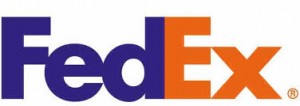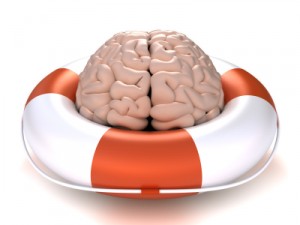Which Way to the Future? International Branding.
“Time flies like an arrow”, Arthur Eddington.
“Fruit flies like a banana”, Groucho Marx.
If it’s true that time flies like an arrow, which direction is it headed? Well, it depends on your culture. We’re all aware that different cultures have different attitudes toward time. In Sweden, people show up for a 7:00 dinner date at 7:00 precisely. In Mexico, people might show up half an hour to an hour later. You shouldn’t show up “on time” because your host might not be ready and that would be embarrassing.
But which way does time flow? Where, precisely, is the future? Somewhat surprisingly, it depends on how you read. People who read from left to right — as we do in English — see the future as being to the right. Indeed, good marketing charts always show trends up and to the right. (I think I could make up most marketing charts without knowing the data).
People who read from right to left — think of Arabic and Hebrew – tend to see the future as being to the left. This has important implications for public speaking. I’ve given speeches to Arabic audiences and I’m sure that I pointed to the right as I indicated activities in the future. In other words, my body language conflicted with my verbal language and probably confused the audience.
The same holds true in graphic treatments that are used across cultures. My favorite example is the FedEx logo. (I discovered this in a Scientific American Mind article). Look closely at the English FedEx logo below. In the “negative space” between the E and the X, you’ll see an arrow in white. Which way is it pointed? Well … to the future, of course.

Now look at the Arabic FedEx logo. Again, you’ll find an arrow in the negative  space between letters. Which way is it pointed? Well … to the future, of course. It’s a good example of how different cultures see things differently. It’s also a fairly rare example of a corporation showing cross-cultural awareness and sensitivity in its advertising. FedEx should be commended.
space between letters. Which way is it pointed? Well … to the future, of course. It’s a good example of how different cultures see things differently. It’s also a fairly rare example of a corporation showing cross-cultural awareness and sensitivity in its advertising. FedEx should be commended.
(For an example of how the Aymara Indians of Bolivia see the future differently than the rest of us, click here).
The Carat Contest. Who Wins?

I win!
Let’s say that I buy my wife a two carat diamond ring. At the same time, you buy your wife a one carat diamond ring. Let’s also assume that the diamond I buy is not very good quality — it has a few flaws, the cut is not great, and the color is a little off. Your diamond, on the other hand, is superb — it’s flawless and clear and the cut is spectacular. In fact, though the diamond you bought is half the size of the one I bought, your diamond cost more — maybe quite a bit more.
So, in the Best Husband Sweepstakes, who won? Well, I did. Even though it takes four C’s (cut, color, clarity, and carat weight) to measure a diamond’s quality, people really only talk about carats. When your wife flashes her diamond, no one asks, “Gosh, what clarity is it?” The only question is, “Wow, how many carats is that thing?” You bought a better diamond but I win the opinion poll.
It hardly seems fair, does it? You’ll know in your heart of hearts that your wife has a better ring. So will she. But in the “marketplace” of public opinion, two carats is better than one.
What does this have to do with strategy, innovation, and brand? All too often, companies and individuals really don’t understand how they’re being judged. It’s useful to take a step back and determine how the league table is really being compiled. Here are some examples:
- I thought my last company, Lawson Software, was doing a very good job at improving customer satisfaction. But what about our stock price? It was doing reasonably well, considering all the changes, but it wasn’t outpacing the market. So another company bought us. Our customers were getting happier but they were no longer our customers.
- Landline telephone companies thought they were being evaluated on the quality of their calls. Did it sound like the person you were calling was right next door? That was important up to a point but, beyond that point, mobility and convenience were much more important. The landline companies were toast.
- Your local bookstore thought it was being judged on the quality of its collection and customer service. That worked well for a long time. Then people decided that what they really wanted was the information inside the book rather than the physical book itself. Ooops!
Do you really know how you (or your company) are being judged? Maybe it’s time to step back, look around, and re-evaluate. Ask around. Do some research. Evaluate what other people are evaluating. It’s good to know about cut, color, and clarity. It’s crucial to know about carats.
Smart People Doing Stupid Things

Just being smart is not enough
Are smart people smart in all regards? Is somebody who is book smart also street smart? I think we’d all agree that the answer to these questions is “no”. We have a stereotype of “pointy headed intellectuals who can’t park a bicycle straight”. In fact, here’s a recent story of a very smart college professor who did something very stupid and landed in a jail in Argentina. And yes, it involves a bikini model.
One problem with our measures of intelligence — IQ mainly — is that they may be culturally biased. A deeper problem is that they really only measure System 2 — the slow thinking portion of our brain. (For an introduction to Systems 1 and 2, click here). System 2 is deliberate, slow, and requires a lot of energy. We have to invoke it and focus it to make it work effectively. System 1, on the other hand, is fast, efficient, automatic, and always on. If you’ve ever experienced highway hypnosis, your System 1 was driving the car while your System 2 was thinking of more important things.
System 1 makes the vast majority of our decisions for us. It recognizes patterns and makes decisions. If a pattern is confusing or unrecognizable, System 1 may call on System 2 to review the evidence and render a more considered decision. Or it may just jump to a conclusion on its own. You never know. You can’t get through the day without System 1 — you would exhaust yourself if you made every decision using System 2.
So System 1 makes most of our decisions but IQ tests only evaluate System 2. There’s something amiss here. We measure how smart someone is — in a bookish or academic sense — but we don’t measure how rational they are.
Can we measure how rational a person is? Kevin Stanovich thinks so. Stanovich coined the term “dysrationalia” which is defined as “the inability to think and act rationally despite adequate intelligence.” There’s some debate as to whether this is a thinking disorder or a learning disability (after all, you can get good grades and still be irrational). But something seems to be going on and Stanovich tries to put his finger on it in his book, What Intelligence Tests Miss. Stanovich essentially argues that IQ tests (and college entrance exams) don’t measure judgment or effective decision making.
We may think of good judgment as an element of intelligence but Stanovich argues that it’s different and needs to be measured differently. He proposes a Rationality Quotient or RQ test. As Sally Adee points out in New Scientist, such a test would aim “to assess our ability to transcend cognitive bias.” In other words, it’s our ability to override the heuristics and biases of System 1. Adee continues that rationality comes from metacognition, “…the ability to assess the validity of you own knowledge. People with high RQ have acquired strategies that boost this self-awareness.” As an aside, this is exactly what I teach in my critical thinking classes.
The RQ is not finished yet and it probably won’t be for a while. It will take some amount of time to gain agreement on what such a test should include and then validate it in many different situations. Indeed, it may even be difficult to decide what “rational” really means. What’s rational to one person may seem insane to another. In fact, that’s a good question: what’s your definition of rationality?
Why Your Dog Is Happier Than You Are

The door’s opening!
Story 1: When I come home, I open the front door and our dachshund, Bella, comes racing through the house, throws herself at my feet, rolls over for a belly rub, and wags her tail vigorously. It doesn’t matter if I’ve been outside for a few minutes or away on a business trip for a few days. Bella’s reaction is always the same – she’s thrilled to see me.
Story 2: Suellen and I enjoy art and we’re friends with several artists, so we have a lot of artsy things – photographs, etchings, a few paintings, and sculptures. Some of it is pretty good stuff. Even the not-so-good stuff has lots of sentimental value. I notice, however, that I don’t notice the art so much. I can walk through the house without registering that it’s filled with art. It’s almost like wallpaper.
Why is it that Bella gets excited just by hearing the door creak open while I can blithely ignore some very stimulating art? I think it’s because of hedonic adaptation. I have it. Bella doesn’t.
When we acquire a new piece of art, I pay a lot of attention to it. I may study it, talk about it, maybe even brag about it. It’s new and different and it stimulates me. After a few months, however, it’s just part of the new normal. I still like the piece but it doesn’t stimulate me. I’ve adapted to its presence. That’s hedonic adaptation (or the hedonic treadmill as it’s sometime called).
Bella, on the other hand, doesn’t seem to grow accustomed to the same old thing. Everything seems new to her all the time. The door creaks and off she goes to a new adventure. At the very least, she’ll get a belly rub. She might even get a treat. Oh, it’s so exciting!
There’s a subtler difference as well. Art is a thing, something to be owned. An opening door is an experience: who knows what will happen? There’s a bundle of evidence that experiences generate more happiness than things. If you want to improve your general level of happiness (and perhaps get off the hedonic treadmill for a while), invest in doing things rather than buying things.
I’ve written about happiness before (click here and here and here). There’s a rising tide of research on Gross National Happiness and a suggestion that we over-emphasize Gross National Product in public policy. For instance, American wealth has tripled in the past half century but we haven’t gotten any happier. Relative wealth seems more important than absolute wealth.
What about at the personal level? The best advice seems to be to invest in small experiences. Why small rather than big? Because you can do them more often. Frequency seems to be more important than size. There’s a novelty factor that seems to intrigue and stimulate us. Bottom line: do more things, buy fewer things. Oh, and get a dog.
Want a Good Decision? Go to Trial.

We all know what the decision should be.
Let’s say that you’re arrested for a terrible crime. After a few months in jail, you’re taken to court for a trial. In the courtroom, you meet your lawyer for the first time. The judge selects a jury. You notice that all the jurors are white males and that they all went to the same business school.
As the trial begins the judge tells the jurors – very directly – that she believes you’re guilty. The prosecutor then uses Power Point to present the evidence against you. The presentation consists of over 200 slides.
Your lawyer is not allowed to present any evidence – he can only respond to the prosecutor’s slides. He raises a number of objections but the prosecutor handles each one smoothly. You notice that the prosecutor doesn’t refute the objections but merely brushes them aside. The slides are complicated and hard to follow. You notice that some of the jurors are glassy-eyed. Others are checking their BlackBerries.
When the prosecutor’s presentation concludes, the jurors don’t adjourn to a separate room to discuss the case. Rather, the judge simply asks them, “So, do you agree with me?” Most of the jurors nod their heads and you’re whisked off to jail.
Could that really happen? Let’s hope not in a court of law. But, as Chip and Dan Heath point out in their book, Decisive, that’s exactly how corporations make bazillion dollar decisions. Echoing Paul Nutt’s book, Why Decisions Fail, the Heaths point out that most business decisions really are one sided.
Here’s how it goes. An executive gets an idea that just might be brilliant – or not. Then a process begins to justify the idea and convince top management to support it. Most of the members of top management recognize that a justification process is going on. They don’t really object to it because 1) they don’t have a forum to present their ideas; and 2) they don’t have the resources to develop the other side of the story or to investigate alternatives.
The justification process grinds on. As the Heaths point out, the process usually results in a “whether or not” decision. Executives don’t consider a range of alternatives but simply vote up or down, yes or no.
The process usually includes a top management meeting with a barrage of Power Point slides. I’ve participated in dozens of them. Usually someone in the meeting says, “Well, let me play devil’s advocate for a moment ….” No matter what that person says, the objection is somehow handled and brushed aside. The devil’s advocate may have a good point but he doesn’t have the data to back it up. The result is that the group feels “better” about the decision … “after all, we did consider both sides.”
Paul Nutt writes that business “…decisions fail half of the time. Vast sums are spent without realizing any benefits for the organization.” In other words, we could flip a coin and do just as well – and save a bundle on consulting fees.
We often complain about our judicial system. But the trial by jury – with evenly matched sides presenting evidence – is probably the best system ever developed for discerning the truth when the evidence is murky. In business, the evidence is often murky; we’re trying to predict the future with incomplete data. You want the best decision? Put it on trial.